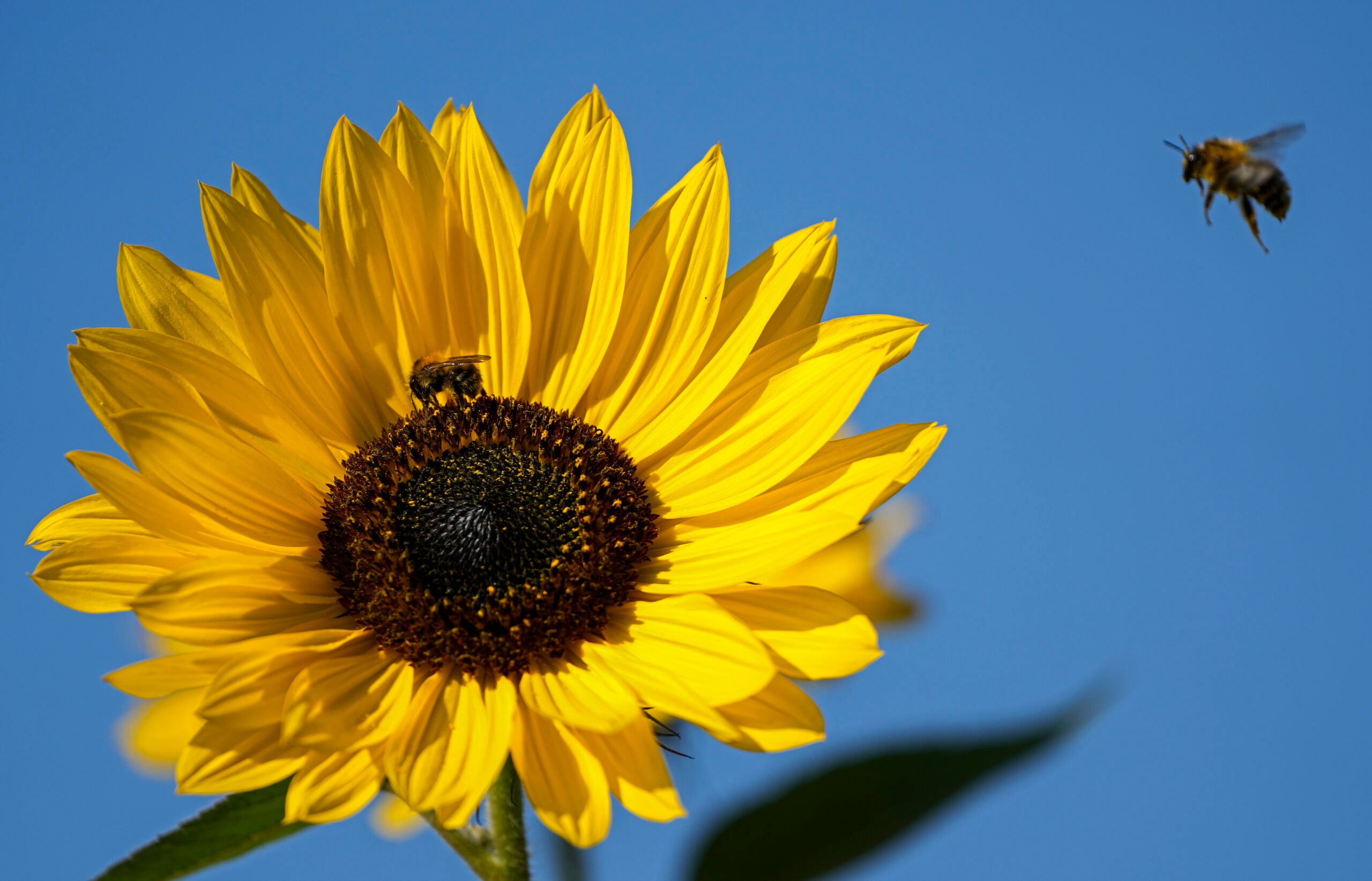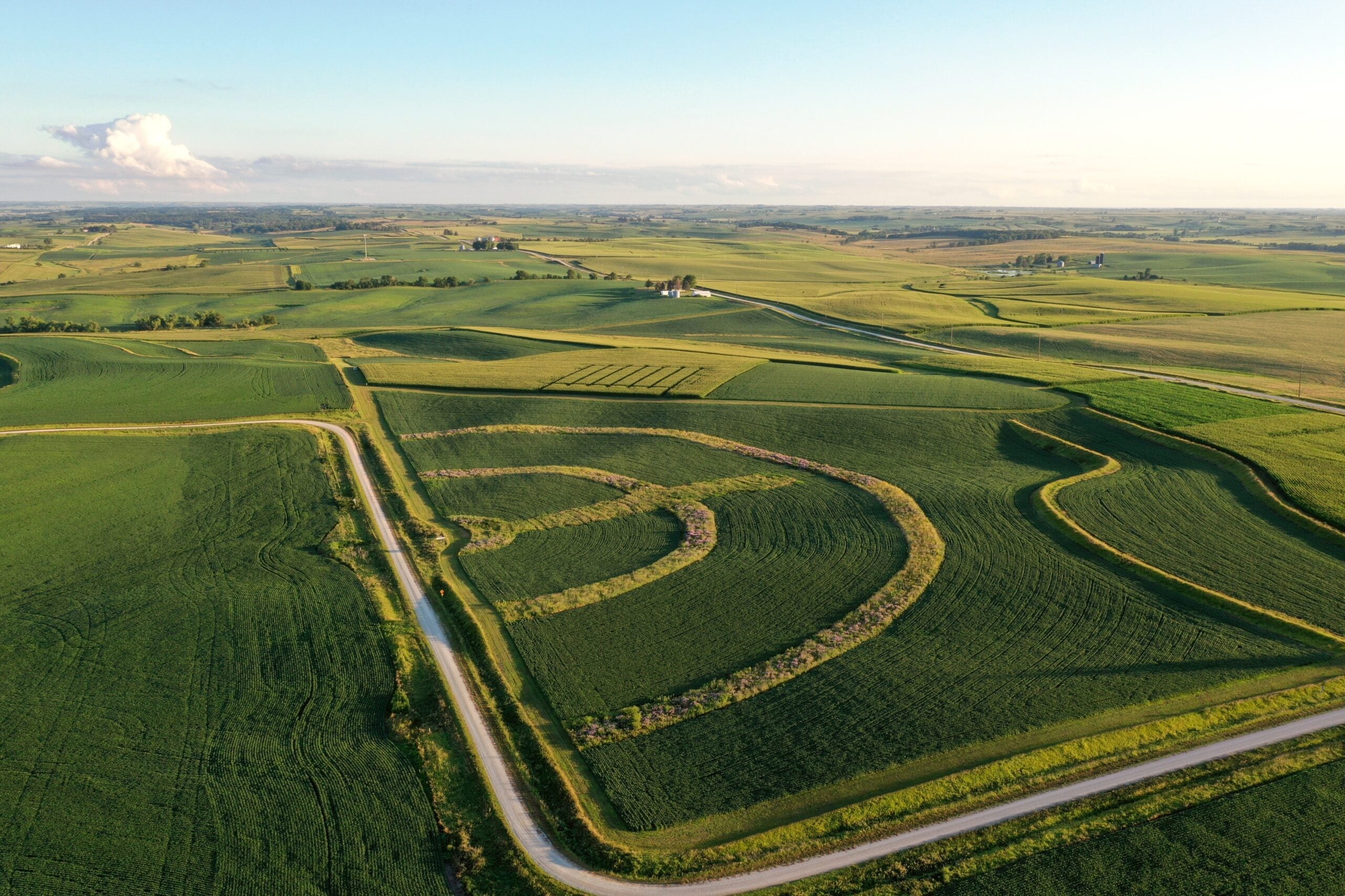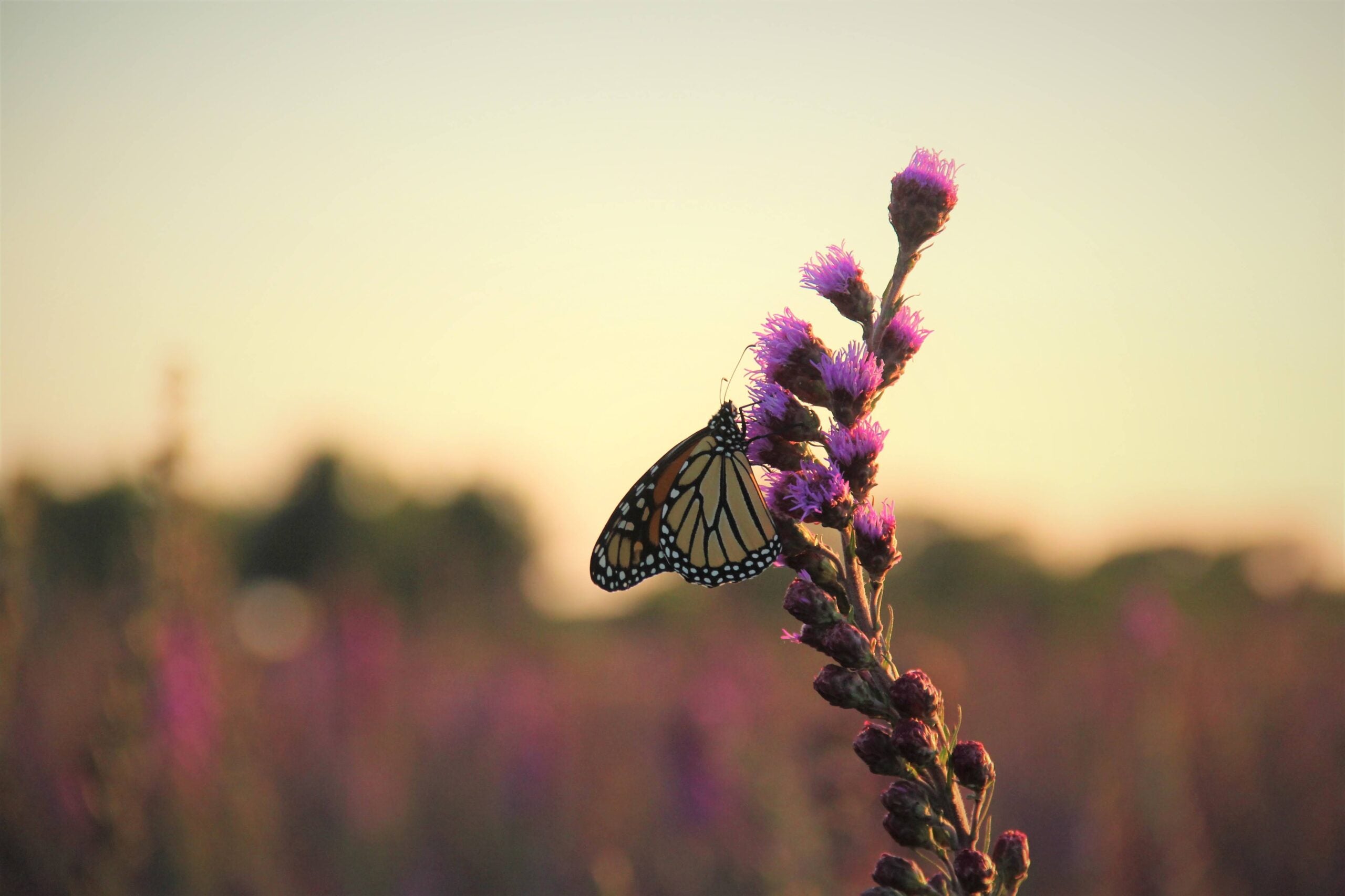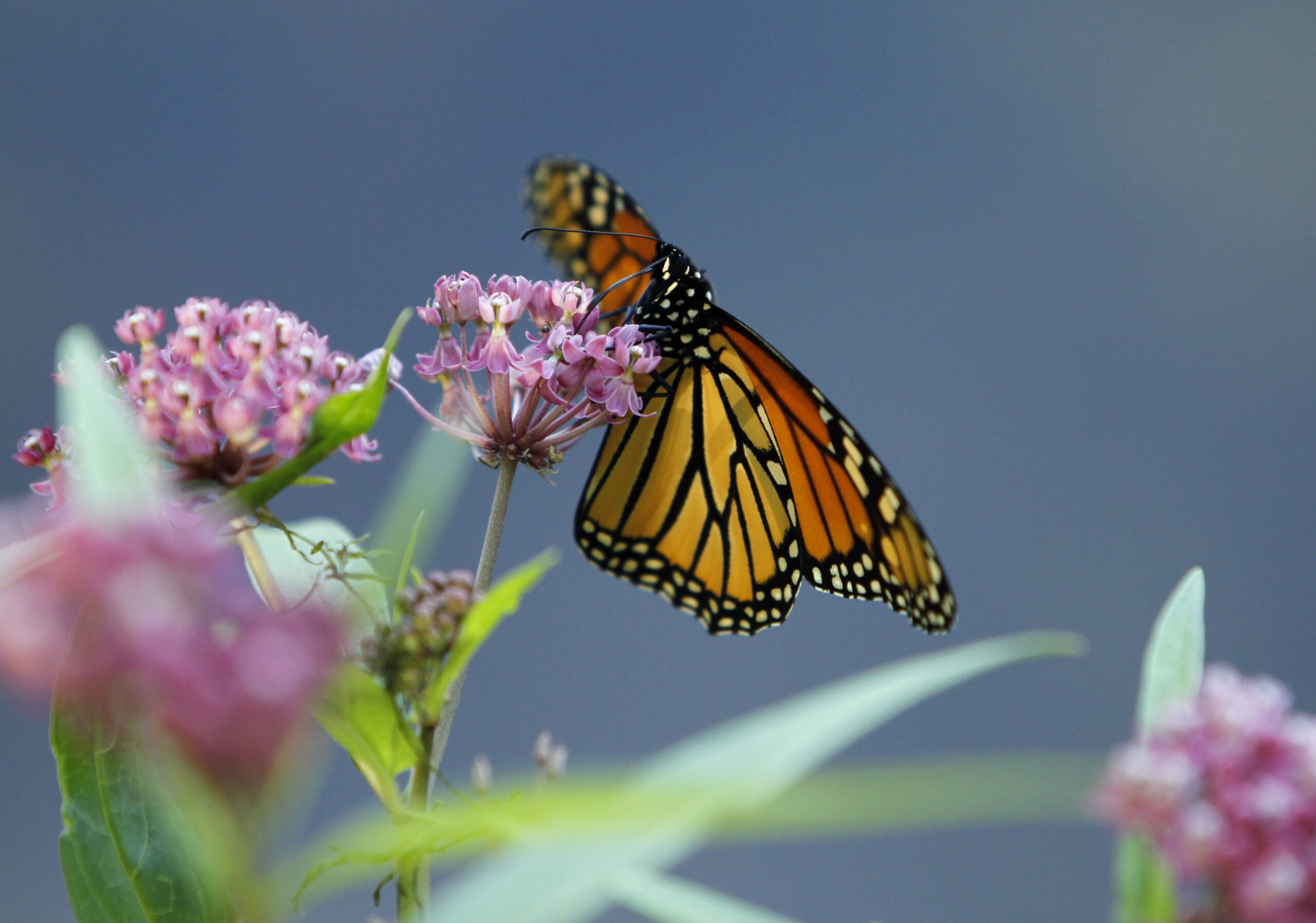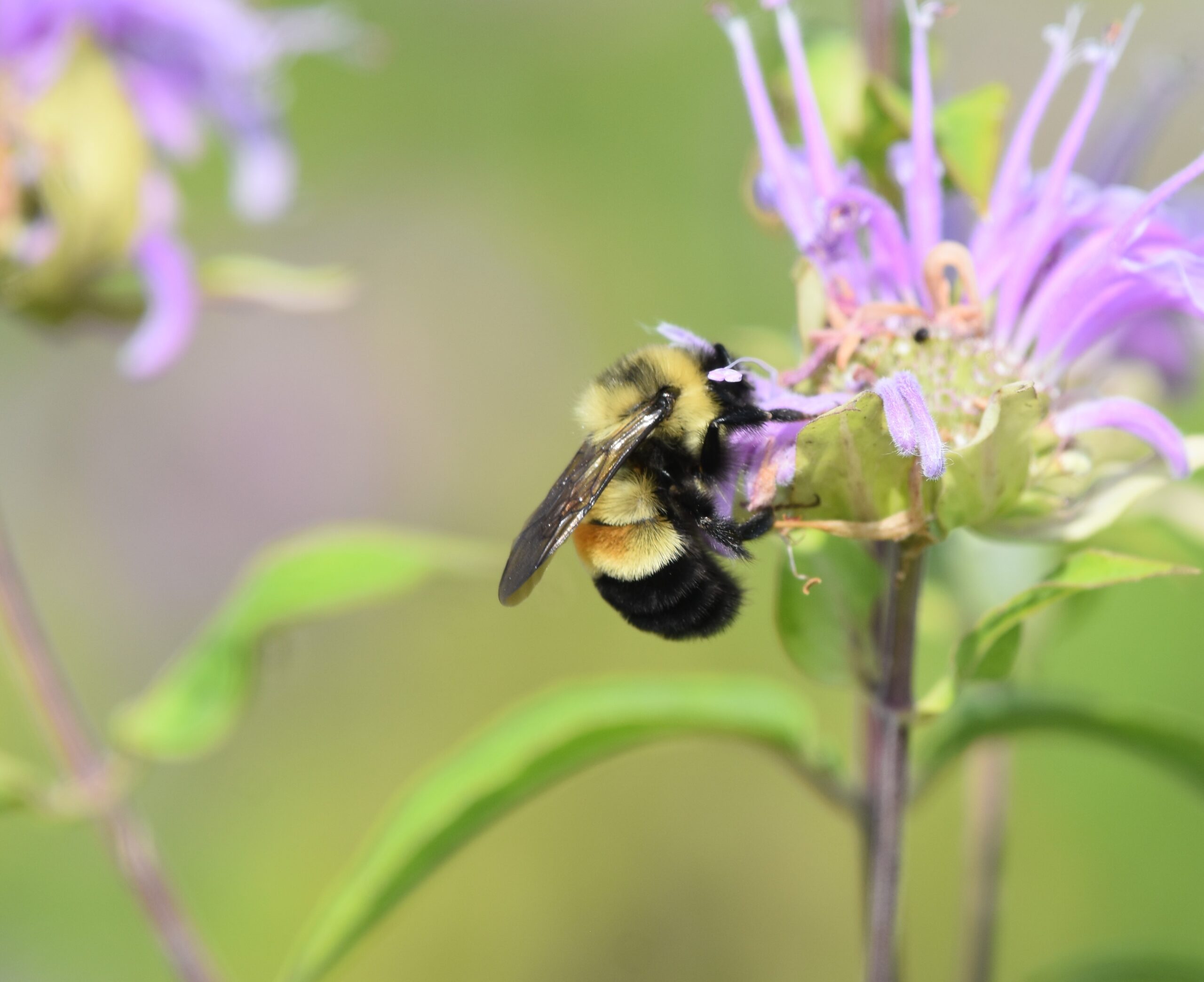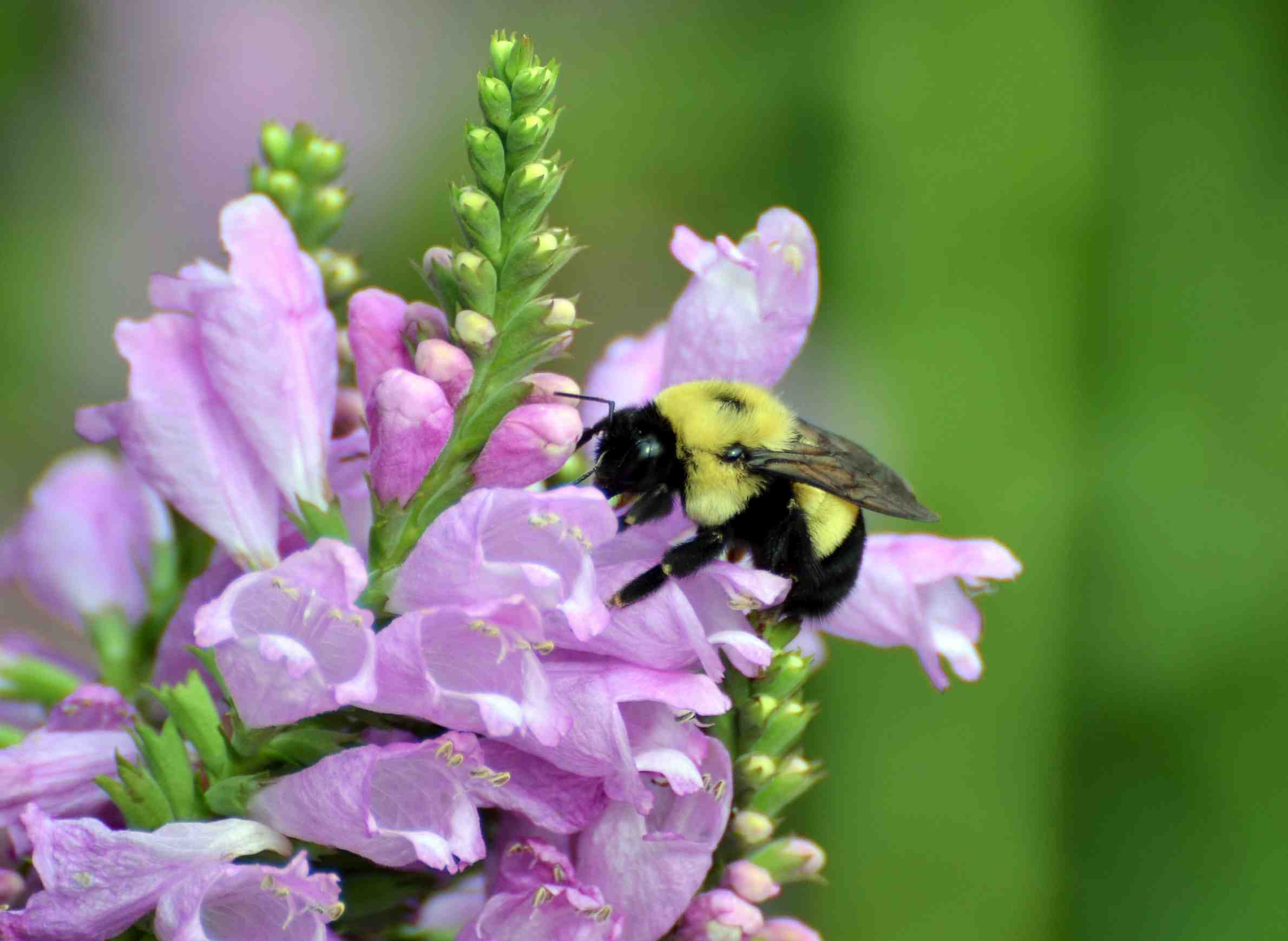Some of the most important sources of the global food supply — pollinators — are in decline, but work is underway in Wisconsin that could reverse that trend.
“We’re losing species from different parts of the range in the state, and eventually if we lose enough of them, they’re going to disappear,” said Jay Watson, a conservation biologist with the state Department of Natural Resources. “These are pollinating our native plants and also our foods that we eat.”
“That’s the most concerning to me, is you start losing this whole ecological service that gets broken down and has a trickle-down effect,” he continued.
News with a little more humanity
WPR’s “Wisconsin Today” newsletter keeps you connected to the state you love without feeling overwhelmed. No paywall. No agenda. No corporate filter.
Pollinators include bees, butterflies, moths, beetles, wasps and hummingbirds, among others. They transfer pollen from one flower to another, which allows plants to reproduce. In Wisconsin, there are about 400 bee species, with about 3,600 in the U.S. and 20,000 around the world, according to the 2016 DATCP Wisconsin Pollinator Protection Plan.
Globally, about 75 percent of flowering plants depend on animals for pollination, according to the U.S. Department of Agriculture. That affects an estimated one out of every three bites of food humans eat.
Watson pointed to a number of causes driving a decrease in some pollinator populations, including habitat degradation and extreme weather conditions. Those could range from dry spells that cause a reduction in some plants’ blooming period to flooding events.
In 2022, the monarch butterfly was classified endangered species by the International Union for Conservation of Nature. Butterflies that depend on prairies or grasslands are showing the biggest decline in the butterfly group, Watson said.
Watson said it’s been difficult to collect some information on other species.
“We do not have funding to survey statewide. We’re doing the best with what we have,” Watson said.
The state agency also doesn’t have dedicated funding to protect pollinator habitat. But the DNR announced Monday it’s receiving $35,000 in new funding from the Natural Resources Foundation of Wisconsin, a nonprofit.
Those dollars will go toward increasing pollinator habitat at seven state parks, as part of the ‘Pollinator in the Parks’ program, which began in 2021. They are Aztalan State Park, Brunet Island State Park, Chippewa Moraine State Recreation Area, Hank Aaron State Trail, Harrington Beach State Park, Pattison State Park and Peninsula State Park.
Caitlin Williamson, the NRF’s director of conservation programs, credited much of the support for DNR’s work to the Wisconsin Pollinator Protection Fund.
In recent years, 10 other state parks have received funding. One of those was Governor Dodge State Park in Iowa County, where Williamson said over the last year, there was a documented sighting of the rusty patched bumblebee, a federally endangered listed species, something she said shows “this habitat work is working.”
The work varies based on the property, Williamson said, but many focus on diversifying existing plantings. One area, for example, is a prairie with a lot of grasses but few wildflowers, she said.
Wisconsin’s pollinator-dependent crops — including fruit and vegetables like apple, cranberry, cherries and green beans — represent over $230 million in annual production, according to recent state data. Honey and beeswax account for $6.5 million in annual production.
Democratic Rep. Lee Snodgrass of Appleton said that financial impact is one of the reasons she thinks the state should do more to protect pollinating populations.
“On that alone, it makes economic sense. We are an agricultural state,” Snodgrass said. “But I think if you talk to anybody who reflects on how the presence of pollinators has changed since they were young, it’s very anecdotally easy to see and is backed up by science that shows that we’ve seen a significant decline.”
Snodgrass and other Democrats in the Assembly are introducing a slate of bills as part of a pollinator protection package. Some include making June pollinator protection month, one that would ban the DNR’s use of some insecticides, and another would require an individual or a business selling a plant to label it as beneficial to pollinators.
Another would designate the rusty patched bumblebee as the state native insect and require the Wisconsin Blue Book to include information on that designation.
That insect — listed as a federally endangered species and one of special concern in Wisconsin — is globally imperiled, according to the state Department of Natural Resources. The bee is considered extremely rare in Wisconsin.
Bumblebees are important pollinators because they’re active throughout the whole growing season, typically mid-April to October, Watson said.
DNR suggests planting native species, protecting pollinating flowers, shrubs and trees
In addition to investing in global solutions, Watson suggested a number of ways the public can help. He said people can plant native plants and should consider planting native shrubs and flowering trees as well as flowers.
People can also join the Wisconsin Bumble Bee Brigade, a community science project that monitors native bumblebees. In 2022, there were more than 200 volunteers.
In Wisconsin, along with the endangered rusty patched, seven of the state’s 20 bumblebee species are classified as state species of greatest conservation need, while three are considered species with information needs, according to the Bumble Bee Brigade website.
Williamson of the Natural Resources Foundation of Wisconsin said pollinators are one of the few threatened species many people can see in their backyard, compared to rare critters that often require people to travel to distant places.
Williamson suggests planting milkweed, which is considered habitat for monarch butterflies. She also pointed to the Monarch Larva Monitoring Project, along with other citizen science data projects. People can also donate to the Wisconsin Pollinator Protection Fund to support research projects.
“The beauty of pollinator conservation is that everyone can make a difference,” she said.
Wisconsin Public Radio, © Copyright 2025, Board of Regents of the University of Wisconsin System and Wisconsin Educational Communications Board.

